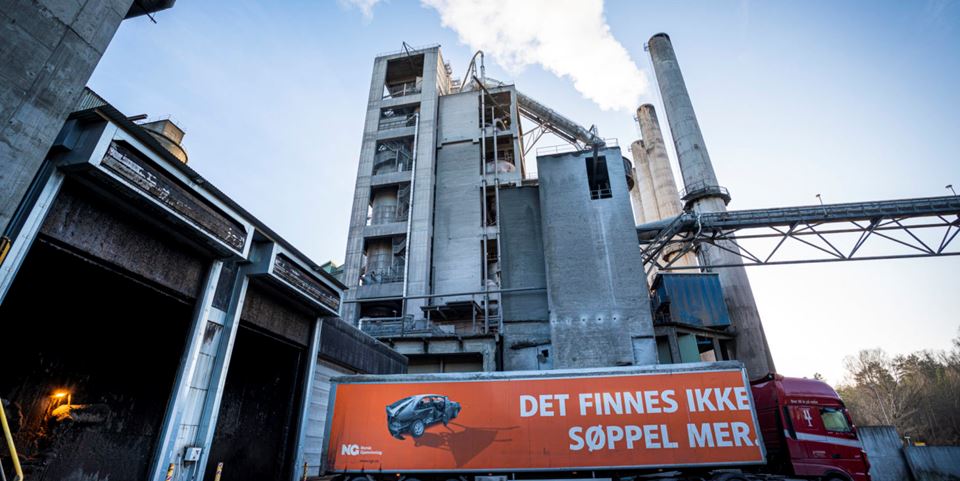At last – CO2 emissions have become so costly, and climate change mitigation technology so inexpensive, that it has finally happened! Industrially-derived CO2 can now be managed on a commercial basis. The evidence comes in an announcement made last autumn by the Norwegian chemical giant Yara concerning its ammonium and fertiliser factory at Sluiskil in the Netherlands. The plan is to capture CO2 from this plant and Yara, not the state, will be picking up the tab.
And just five days into the new year, there was good news for all those waiting for a breakthrough in carbon management policy. It emerged that the plans being hatched by Equinor and the German renewables giant RWE for the export of natural gas-based hydrogen from Norway to Germany will require the large-scale storage of CO2, which is a by-product of the process by which hydrogen is extracted from natural gas.
Our world is in dire need of announcements like these. At the same time, countries, industrial companies and researchers should all be joining forces to identify storage sites for CO2 that can be used by all those interested in following in the footsteps of Yara, Equinor and RWE.
A train without rails
The current status of carbon capture, transport and storage (CCS) technologies can be compared to a set of trains looking for a rail network. Our first trains are the technologies we have developed to capture CO2 from industrial plants and natural gas. But without a rail network on which to run – a commercial carbon management infrastructure in our analogy – these trains will not get very far. And according to both the United Nations and the International Energy Agency (IEA), carbon management is essential if we are to mitigate climate change.
The ‘rail network’ we need has to incorporate not only transport systems, but also massive and secure storage reservoirs to sequester the CO2 we capture.
But currently, very little thought has been given to the planning of this network. This is where we currently find ourselves in the world of CCS.
If the CCS approach is to be rolled out at an industrial scale, we first have to identify storage sites that together can be used to sequester billions of tonnes of CO2. If this is to happen fast enough to enable CCS to make a difference in our attempts to mitigate climate change, the private sector must be invited and incentivised to participate in the planning process.
Hope, faith and disappointments
The history of CCS has been a roller coaster of hope, faith and disappointments. As long ago as in the 1980s, it was pointed out that CO2 emissions were destabilising the Earth’s climate. This information formed the background for the ground-breaking idea, proposed in the second half of the 1980s by SINTEF researchers Lindeberg and Holt, to sequester CO2 as a means of preventing global warming.
A special report published by the UN in 2005 was a turning point in the story. It made it clear to everyone that CCS had to become reality if global warming on Earth was ever going to be stabilised.
However, for many years, no viable business models for CCS existed because the capture, transport and storage of greenhouse gases in the subsurface was deemed to be too costly, both financially and in terms of energy.
How to pay for CCS
CCS can in fact be paid for by so-called ‘climate quota’ price structuring and/or schemes founded in mandatory legislation. And this is the point we are at now. Quota prices in the EU are currently at about NOK 1000 per tonne of CO2. There are also new mechanisms operating in the EU that will encourage the CO2 quota price to increase in the period leading to 2030 by incorporating several industrial sectors into the quota trading system. At the same time, the EU is strengthening its climate change mitigation targets.
In the same spirit, a recent climate report submitted to the Norwegian parliament states that the quota price for CO2 emissions shall increase to about NOK 2,000 per tonne in 2030. According to IEA estimates, the price should be USD 250 per tonne leading up to 2050 (about NOK 2,600 at current exchange rates.) Meanwhile, the USA, the UK and Denmark are developing models for the financing of CCS projects.
When all these mechanisms fall into place, it will become viable to operate CCS projects on a commercial basis. But we also need an infrastructure – an integrated system for the capture, transport and storage of CO2.
The Langskip project is a beginning
In Norway, we are seeing the start of this process with the launch by the state and industrial sector of the Langskip (Long Ship) project , which will utilise the Northern Lights project infrastructure to facilitate the transport and storage of CO2. The CO2 captured at Yara’s facility in the Netherlands will be sequestered using Northern Lights infrastructure in porous reservoirs buried at more than 2,500 metres below the North Sea.
Reservoirs on the Norwegian continental shelf offer the largest storage capacity in Europe, but a lot more capacity will be needed than has been planned for.
In order to become ‘climate neutral’, Europe alone will have to capture and store about a billion tonnes of CO2 annually by about 2050. This is twenty times more than Norway’s current levels of greenhouse gas emissions.
Licences to explore for storage reservoirs
Achieving this target will require global collaboration between nations, the industrial sector and the research community. Research can assist with models for efficient resource utilisation, for example in connection with data sharing. Such know-how will enable more rapid upscaling and reduced risk.
In order to facilitate the management of CO2 emissions from selected point sources, Norway and Denmark have awarded licences to companies to explore for storage sites. This requires setting aside given areas and the establishment of predictable processes.
If climate change mitigation is to be achieved, we should be awarding similar licences to companies that want to explore for storage sites for CO2 derived from more than single point sources. We also require financial mechanisms to incentivise such companies, preferably in the form of reliable estimates as to what emissions owners will expect to pay for utilising a given CO2 storage location.
The entire process of identifying and operating CO2 storage locations has to be made commercially viable as soon as possible. Without this, our ‘CCS trains’ will arrive too late to make a difference.
This article was first published in the daily Dagens Næringsliv on 10 January 2023 and is reproduced here with the permission of the paper.


